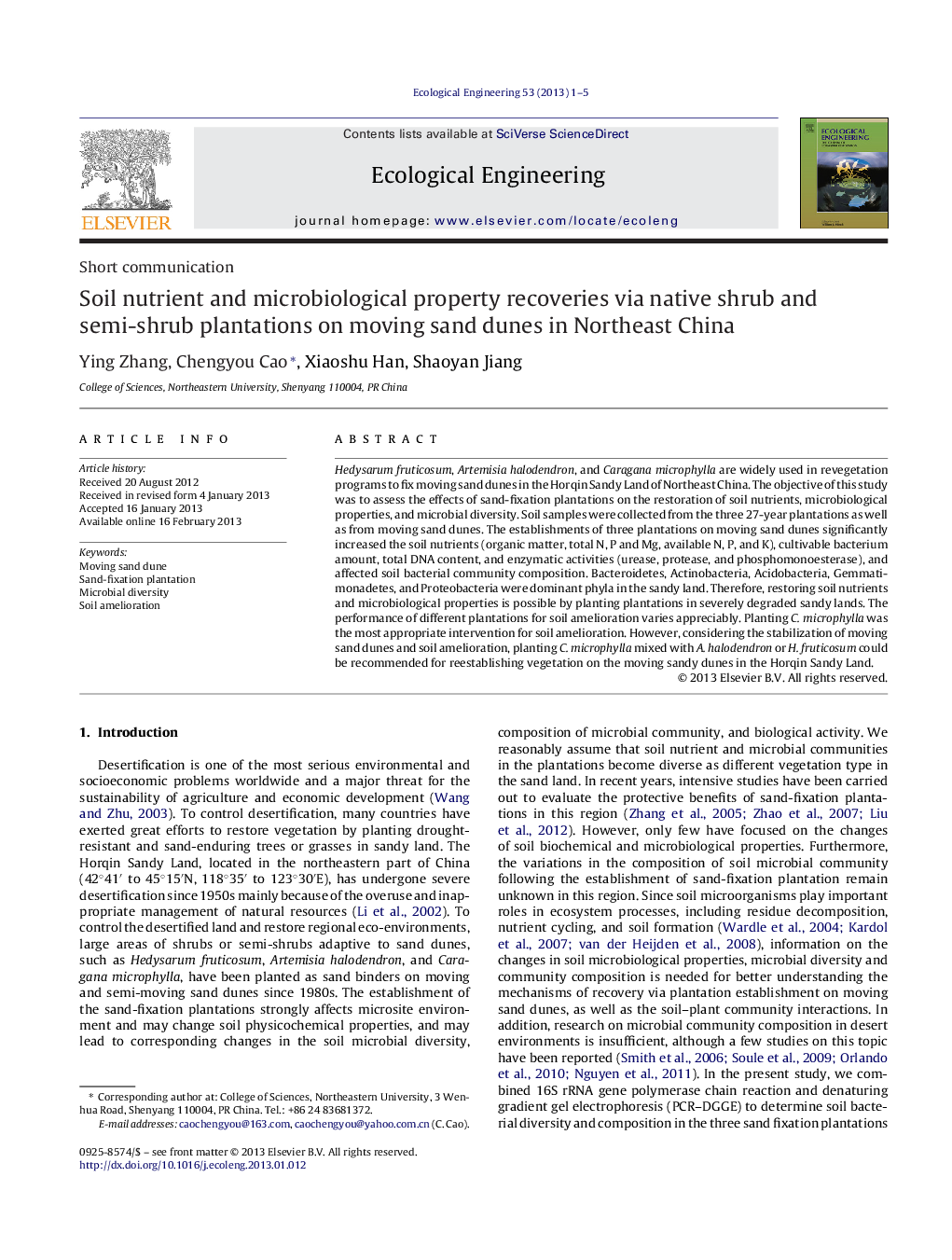| Article ID | Journal | Published Year | Pages | File Type |
|---|---|---|---|---|
| 4389659 | Ecological Engineering | 2013 | 5 Pages |
Hedysarum fruticosum, Artemisia halodendron, and Caragana microphylla are widely used in revegetation programs to fix moving sand dunes in the Horqin Sandy Land of Northeast China. The objective of this study was to assess the effects of sand-fixation plantations on the restoration of soil nutrients, microbiological properties, and microbial diversity. Soil samples were collected from the three 27-year plantations as well as from moving sand dunes. The establishments of three plantations on moving sand dunes significantly increased the soil nutrients (organic matter, total N, P and Mg, available N, P, and K), cultivable bacterium amount, total DNA content, and enzymatic activities (urease, protease, and phosphomonoesterase), and affected soil bacterial community composition. Bacteroidetes, Actinobacteria, Acidobacteria, Gemmatimonadetes, and Proteobacteria were dominant phyla in the sandy land. Therefore, restoring soil nutrients and microbiological properties is possible by planting plantations in severely degraded sandy lands. The performance of different plantations for soil amelioration varies appreciably. Planting C. microphylla was the most appropriate intervention for soil amelioration. However, considering the stabilization of moving sand dunes and soil amelioration, planting C. microphylla mixed with A. halodendron or H. fruticosum could be recommended for reestablishing vegetation on the moving sandy dunes in the Horqin Sandy Land.
► Establishment of plantation increases soil nutrient and microbiological property. ► The performance of different plantations for soil amelioration varies appreciably. ► Establishment of plantation affects bacterial diversity and community composition. ► We report the dominant groups of soil bacteria community in Horqin Sandy Land.
